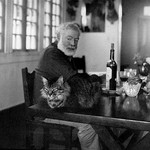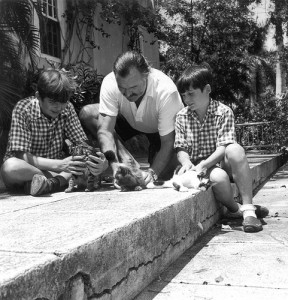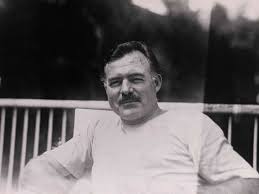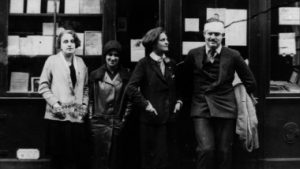 The Blue Collar Bookseller review: The Hemingway Hoax
The Blue Collar Bookseller review: The Hemingway Hoax
-
- Kevin Coolidge
- Never trust a man who doesn’t like cats…Irish proverb
Uncanny focus, curious, observant, a dislike for being disturbed — they sit for long periods of time and sleep more than they probably should. Writers are a lot like cats. Complex, unorthodox, full of personality quirks, hunting when he wills it, working when it’s time — a writer is not a herd animal.
Now, I’m not saying you have to have a cat to be a writer, but the best writers have at least one cat. Mark Twain, Neil Gaiman, Ray Bradbury, Robert Heinlein — they all loved cats. It helps to have someone to understand that writing is a process. You aren’t being unproductive or lazy. You are cultivating stillness.

One of the most influential and manliest writers* of the 20th Century, Ernest Hemingway, was a dedicated feline lover. Like most cat hoarders, he started with a single cat. A ship’s captain gave Hemingway a white six-toed cat, named Snowball.
Today, the Ernest Hemingway Home and Museum on Key West is a playground to approximately 40-50 polydactyl cats. Cats normally have five front toes and four back toes. Not all the cats at the Home have the extra thumb, but they all carry the gene, and can give birth to a Hemingway cat.
If you take the tour, you’ll hear that these kitties can trace their lineage back to the original Snowball, but James Nagel, a Hemingway scholar, claims that Hemingway didn’t have cats when he lived in that house.
“Hemingway liked cats but Pauline, to whom he was married, wanted peacocks. So they got peacocks for the yard … The time when he had so many cats was when he lived in San Francisco de Paula, Cuba.” The estate in Key West is just one of the many places trying to cash in on the writer and the cats associated with him, claims Nagel.

Regardless of where you fall on the Key West cat debate, Hemingway wrote some of his best work in this home, including the final draft to A Farewell to Arms and the short story classic The Snows of Kilimanjaro. I rather suspect there was at least one cat around.
Waiting, seeking, stalking — striking and feasting on the flesh of your thoughts to satisfy a primal need. You are a writer, and you must feed the hunger, and the cat. OK, you can get yourself a big slobbery dog**, but if you want to be a writer that is remembered, you need to get yourself a cat…

*Hemingway ran with bulls, hunted, fished, went on safari, occasionally took a rifle with him, though he preferred his fists. He wrestled bears, rode sharks, and never shed a tear when he got a paper cut. This is also a man that named a cat Snowball…
**Don’t buy into all the cat crap. Jim Kjelgaard, Wilson Rawls, Jack London — all were dog lovers. Of course, if you have a dog, the stipulation is that you are an outdoor writer.
Kevin Coolidge is currently a full-time factory worker, and a part-time bookseller at From My Shelf Books & Gifts in Wellsboro, Pa. When he’s not working, he’s writing. He’s also a children’s author and the creator of The Totally Ninja Raccoons, a children’s series for reluctant readers. Visit his author website at kevincoolidge.org


















